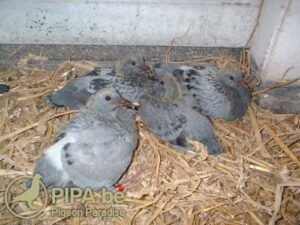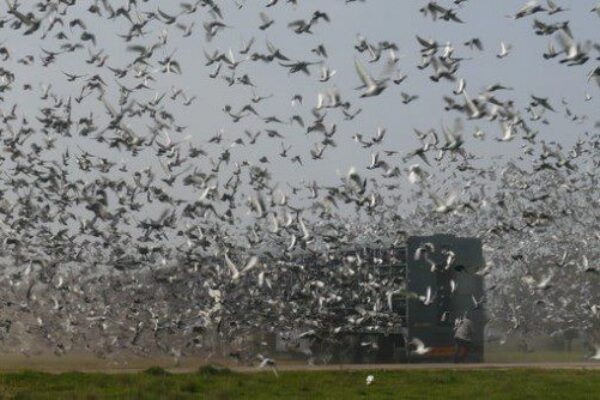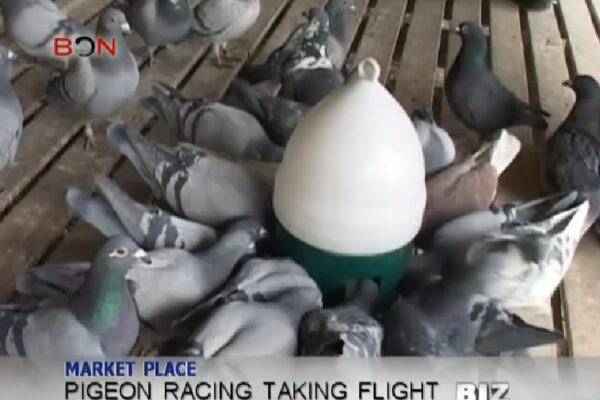Summer Youngsters: A Blessing for the Patient Fancier by Verheecke Marc – Degrave Martin (PIPA)

Most fanciers are not fond of breeding pigeons in summer: they breed two or maybe three rounds from their loft without paying much attention to it and that is it.
If a fancier does decide to let his breeders sit a round of eggs in summer the youngsters are either used for lunch or given to a friend. Sometimes the pigeons are promoted in magazines and put on sale. But these fanciers underestimate the value of summer breeding. Only if you pay regular visits to some of the more successful fanciers in races over 500km, do you start to appreciate the value of a summer bred round in their lofts and their contribution to the overall success of a colony.
Once you realise that some provincial winners had no more than a few races of 100km as a youngster you start to see the benefits of a good breed in summer.
You should not forget that scientists are now fully convinced that inherited talent is not in any way related to the moment of birth. We think it would be a better idea to let your best few breeders breed a number of youngsters instead of just having all the pigeons of the colony breed two rounds of eggs. In fact, pigeons born in the summer grow up in perfect circumstances to develop as a good pigeon. Of course it is vital that the two parents are in perfect health and that the youngsters gain some experience in being basketed. But that applies to any round of breeding.
If you manage to make these summer breeds feel comfortable in the loft (two different nests before the season is not really a problem) they will become an important asset to your loft. These summer bred young birds will be far more interesting than a number of randomly bred youngsters, most of which are usually taken away after the season…
The late Oscar Devriendt from Moere, who we think was one of the best middle distance racers in Belgium, told us this: Our best old pigeons for the middle distance races both provincially and nationally are bred in full summer and do not receive any training at all. They are placed in a separate loft in a nice, quiet environment and they are given plenty of time to mature and to moult. As a yearling they have a busy calendar: they start off the season with several shorter flights to get used to being basketed and then they gradually switch to races over 300 and 500km. Of course, this system leads to several losses among these yearlings because most of them lack experience, but the ones that survive are generally our best middle distance racers, and some of them become real champions.
We took the advice of the late Oscar Devriendt to heart. As soon as we had some more time to devote to pigeon racing we started to experiment with summer bred youngsters as well. We adopted his system and we tried to develop our own ideas to see what they could bring to our loft. Why did Oscar prefer youngsters that were bred in summer and why did he adopt this rather time-consuming system? Obviously, one of the reasons was that some of his best pigeons were bred in summer.
- Because a good summer provides the perfect climatological conditions for breeding: these pigeons have a more natural upbringing compared to pigeons bred in winter, which is actually against their nature.
- Because youngsters bred in summer usually look a lot better than youngsters born in winter, as they have much more exposure to sun.
- Because they can save a lot of energy in their year of birth; energy which they can use for developing their physical capabilities.
- Inexperienced pigeons that do manage to come home after a race generally have a highly developed sense of direction and orientation.
- The pigeons do not waste their energy as a youngster or a yearling. This makes them much more powerful as an old bird.
Oscar Devriendt was a middle distance fancier so he trained his pigeons as such. But take it from us, the same principle applies to pigeons that will be used for the short to middle distance. Obviously it takes a lot of patience and you need a spacious loft for this system. But we think it is a perfect way to test the youngsters of a new breeding pair or a newly purchased pigeon. Besides, youngsters that are born after the racing season can be given the opportunity to show what they have in store for te future.
One thing is clear: if you decide to use summer bred youngsters we guarantee that you will stick to it. Besides, it is never a bad idea to follow the ideas of a former champion like Oscar Devriendt. If that does not convince you, it would be a good idea to pay a visit to some of today’s middle distance champions, because we think there is no substitute for experience.
Summer Youngsters: A Blessing for the Patient Fancier by Verheecke Marc – Degrave Martin (PIPA)






